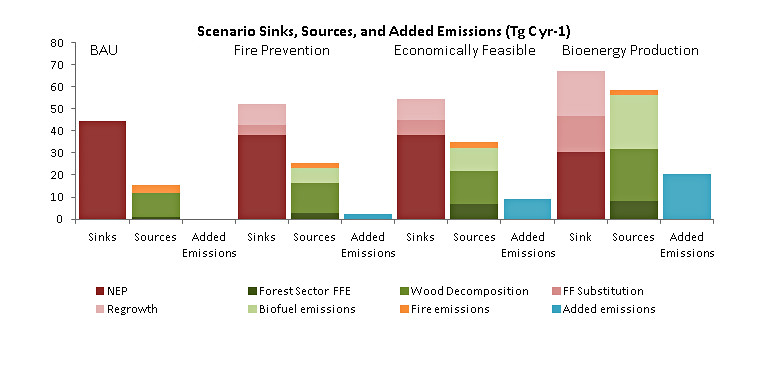Difference Between Carbon and Land Management
Carbon and land management are both related with environmental issues and protection. They involve procedures which assess current approaches, plan technics, and implement strategies to nurture raw resources. Regarding their distinctions, carbon management is focused on gas emissions while land management is focused on land resources. The following paragraphs further reflect such differences.

What is Carbon Management?
Carbon management is assessing and looking into cost-reduction avenues through lessening energy utilization, waste generation, and natural resources consumption. This entails industries’ measurement of their carbon emissions, identification of their carbon footprint, and employment of a reduction stratagem. This carefully studied and documented approach is usually signed off by a senior administrator.
One of the most updated and related legislations is United Kingdom’s “Climate Change Act” which features a long-term agenda for carbon management. The Act aims to bring down greenhouse gas emissions to “zero” by the year 2050. In the United States (US), a 2018 report indicated that greenhouse-related gas emissions increased by 3.4 percent. The biggest sources of such gasses are transportation, power generation, and industry. In Pennsylvania, governor Wolf announced that his state intends to reduce greenhouse gases by 80% by the year 2050.

What is Land Management?
Land management looks into the proper use and development of land resources. Sustainable land management (SLM) is defined by the United Nations (UN) as the utilization of land resources for humans’ consumption while ensuring productivity potentials and maintaining environmental functions. With proper facilitation of land-use, a healthy balance between socio-economic benefits and ecological support can be maintained.
UN’s Food and Agricultural Organization (FAO) has the following four principles:
- To aim for institutional and policy support as well as to develop incentive and income generation programs
- To align procedures with land-user practices and use participatory tactics
- To integrate the utility of natural resources in farms and ecosystem scales
- To involve stakeholders, experts, policy-makers, land users, and partners at all levels
Moreover, The Federal Land Policy and Management Act (FLPMA) of the US values public land ownerships. It governs the management of the proper utilization of land resources for both the present and future needs of America. It specifies the procedures for land-use planning, acquisition, payments, range management, and rights-of-way.
Difference between Carbon Management and Land Management
Focus
Carbon management is specifically looking into carbon emissions, identification of the carbon footprint, and employment of a reduction stratagem. On the other hand, land management looks into the proper use and development of land resources.
Area
Generally, carbon management is more concerned with industrialized areas or urban settings as it is where a number of emissions are produced. As for land management, it is often associated with less industrialized areas or rural settings where farm lands are more abundant.
Related Legislations
Regarding carbon management, America’s “Clean Power Plan 2015” under the Clean Air Act of 1963 specified carbon emission reduction targets for each state. As for land management, the States’ Federal Land Policy and Management Act (FLPMA) provided for the management, conservation, and growth of national resource lands and pertinent purposes.
Issues regarding Donald Trump
One of the well-known issues concerning carbon management is president Donald Trump’s announcement of his intent to quit the Paris Agreement, the United Nations convention on climate change which aims to reduce the emissions of greenhouse gases, mitigate carbon-related utilization, and help fund such procedures. This was previously signed during the administration of Barrack Obama. Moreover, Trump’s leadership is often described as notorious for exploiting public lands and wildlife. One of the issues is the administration’s move to relocate the Bureau of Land Management (BLM) which governs federal lands, the National Wildlife Refuge System, the National System of Public Lands, and other related agencies.
Principles
The Environmental Protection Agency (EPA) of Victoria has laid out specific “Carbon Management Principles”: measure emissions, set objectives, avoid generating emissions, reduce emissions, switch energy source, sequester certain emissions, assess residual emissions, offset the emissions, and review the process. The World Bank identified principles and criteria for sustainable land management: global concerns for sustainability, sustainable agriculture, and sharing responsibilities for sustainability.
Carbon Management vs Land Management : Comparison Chart

Summary of Carbon Management vs Land Management
- Carbon and land management are both related with environmental issues and protection.
- Carbon management entails the company’s measurement of its carbon emissions, identification of the carbon footprint, and employment of a reduction stratagem.
- Carbon management is looking into carbon emissions, identification of the carbon footprint, and employment of a reduction stratagem while land management looks into the proper use and development of land resources.
- Carbon management is more concerned with industrialized areas or urban settings while land management is associated with less industrialized areas or rural settings.
- “Clean Power Plan 2015” under the Clean Air Act of 1963 specified carbon emission reduction targets for each state while the Federal Land Policy and Management Act (FLPMA) specified the management, conservation, and growth of national resource lands.
- Donald Trump announced his intent to quit the Paris Agreement and moved to relocate the Bureau of Land Management (BLM).
- EPA Victoria laid out specific “Carbon Management Principles” such as measure emissions, set objectives, avoid generating emissions, and reduce emissions. The World Bank identified principles for sustainable land management: global concerns for sustainability, sustainable agriculture, and sharing responsibilities for sustainability
- Difference Between Hematoma and Melanoma - February 9, 2023
- Difference Between Bruising and Necrosis - February 8, 2023
- Difference Between Brain Hematoma and Brain Hemorrhage - February 8, 2023
Search DifferenceBetween.net :
Leave a Response
References :
[0]Image credit: https://pixabay.com/de/photos/landbewirtschaftung-reben-rebenstock-735389/
[1]Image credit: https://www.flickr.com/photos/oregonstateuniversity/6261780552
[2]Iyyer, Chaitanya. Land Management. New Delhi: Global India Publications, 2009. Print.
[3]Lockwood, Jeffrey and Jones, Brianna. Behind the Carbon Curtain. Albuquerque: University of New Mexico Press, 2017. Print.
[4]Rabe, Barry. Can We Prize Carbon? Cambridge, MA: MIT Press, 2018. Print.
